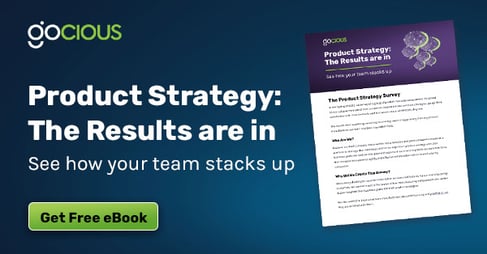 When it comes to creating new products, it is vital to have a clear strategy in mind. You need to consider how the product will meet the needs of the consumer, not just the things they say they want. In other words, what are their pain points, and how will you go about resolving them?
When it comes to creating new products, it is vital to have a clear strategy in mind. You need to consider how the product will meet the needs of the consumer, not just the things they say they want. In other words, what are their pain points, and how will you go about resolving them?
While meeting customer needs is an important aspect of product ideation, it is also essential to integrate the larger needs and goals that the business has. In this post, we will examine several methods to help prioritize ideas for your products.
Defining Consumer Needs
There are several common methods for collecting information about the needs of your consumers. You can go directly to the customer by:
- Consulting with customer success teams
- Conducting one-on-one interviews
- Holding focus groups
- Direct observation
- Completing customer surveys
When trying to understand what the customer wants, you are essentially identifying a problem that they have and proposing a solution. The best answer can either require a quick fix, or sometimes the solution requires time, research, and investment to create something new and innovative to solve the problem.
Defining Business Needs
For a business to be successful and relevant in today's fast-paced market, it must be constantly aware of changing technologies and stay ahead of the curve. Company executives will define the company vision, which will outline future aspirations for the company. Product development must also factor in those business goals and visions for a company to be successful.
Develop Your Product Strategy
When it comes to developing your product strategy, it is essential to keep business needs, and customer needs balanced.
Important questions that arise about developing product features are:
- Which features will allow us to meet the customer's needs?
- What are the features that will lead to technological innovation?
- Which areas do we want to concentrate our R&D efforts on?
- What are the regulations that may affect any innovations?
Gathering information in the form of quantitative as well as qualitative data is important as it allows informed decision-making. Competitive and comparative analysis tools can also be used to analyze data gathered from market research and provide valuable and actionable information on which to base decisions.
How to Prioritize Your Ideas
In the early stages of developing a new product, it is common to prioritize a single feature and align product teams around this priority. It is also important to gather acceptance from your product teams, so everyone invests and aligns with the strategy. You can use one of several methods to prioritize your proposed features.
Effort To Value Ratio
You can prioritize features based on the following values:
- Easy to implement, high value
- Difficult to implement, low value
- Easy to implement, low value
- Difficult to implement, high value
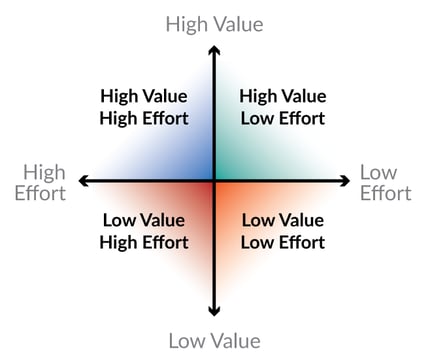
Features that are easy to implement and bring high value can be prioritized in the short term, whereas features that are difficult to implement but have high value may be incorporated further down the product life cycle, allowing time for those features to be developed.
Kano Analysis
Kano Analysis is used to explore and measure customer needs. It focuses on identifying the basic product needs of the consumer and then building on these by examining how performance improves, and customer excitement rises as new features are added.
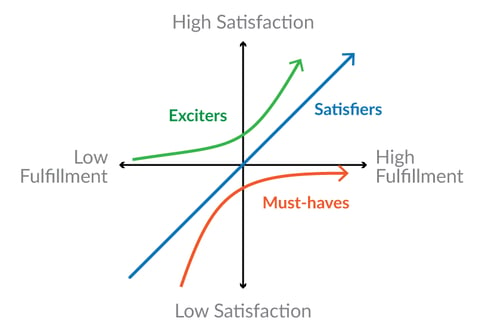
MoSCoW Analysis
MoSCow method of analysis focuses on four categories of prioritization. It does require a general consensus on the product vision to be effective.
- 'Must-have' initiatives are non-negotiable needs such as security features or other functions vital for the product.
- 'Should-have' initiatives that are not essential but provide value. They should be included in the original product or scheduled for future release.
- 'Could-have' initiatives are unnecessary and won't have too much impact on the product if left out.
- 'Will not have' initiatives help identify features you do not want to pursue at a specific time. By removing these features, you can focus on the ones you potentially want to include.
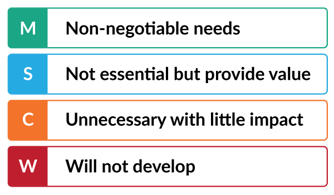
This analysis can be used to prioritize tasks around time restraints, budget restraints, and a team's skill set.
RICE Scoring Model
This method uses a scoring system to prioritize features and is designed to balance the costs and benefits of developing certain features.
- Reach - How many customers can I reach by following this particular initiative?
- Impact - How much customer conversion can I expect?
- Confidence - How confident am I that the project will have a big impact? You need to combine quantitative data on your reach and influence to assess the confidence level for the product.
- Effort - What is the effort required to prioritize a particular feature? You need to do a cost/benefit analysis to identify this.
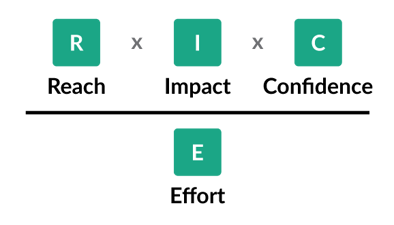
Voting
Stakeholders can also use customer feedback and other information to vote on whether to pursue specific initiatives. Through this method, they can decide which particular features to focus on and in what order to address them.

Prioritizing the Larger Initiatives
As you move to the next stage, it is essential to analyze the initiatives in more depth. The development of certain features may require significant time and capital investment, so it is important to assess the benefit to the company of pursuing them. Forecasting the expected revenue and projecting the desired results can help to prioritize these bigger initiatives.
Find out more about the capabilities of Gocious by booking a demo with us. We’ll meet with you to show you around the program, get to know your needs, and discuss software features and how you can make them work for you and your company.


